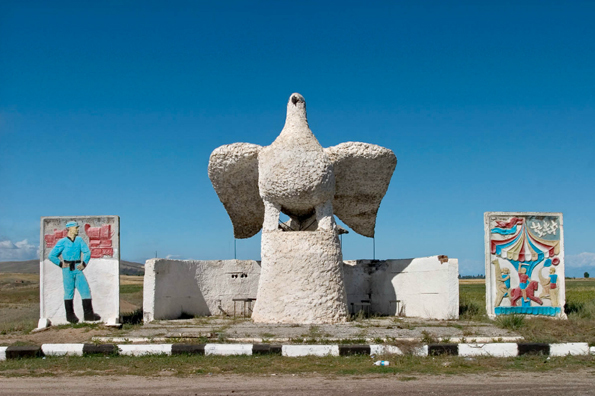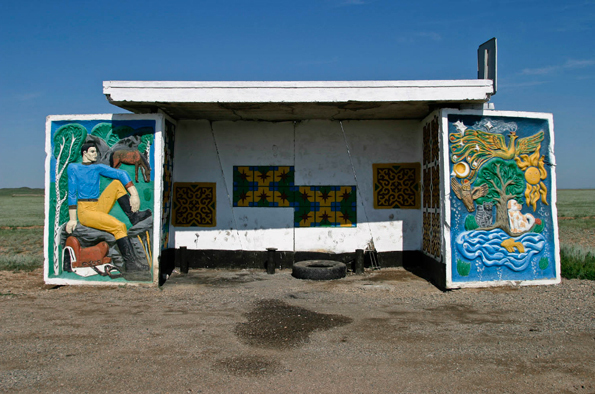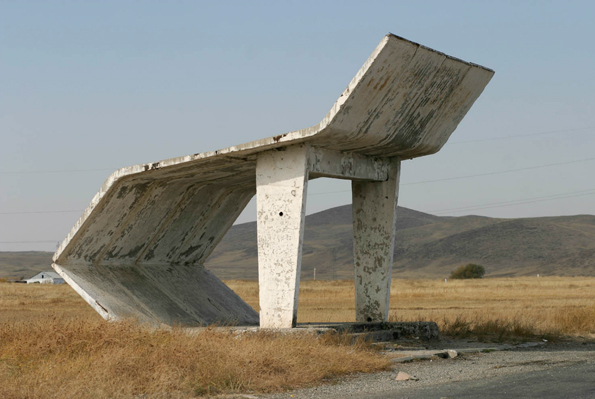Artist:
Christopher Herwig
Materials:
Color photographs.
Description:
“Christopher Herwig’s obsessional project posthumously illumines the Soviet empire’s taste for the utterly fantastical. It restricts itself to one building type, the bus stop or shelter, which tends in Western Europe to be meanly utilitarian. There is a certain amount of that here. But it is atypical. The norm is wild going on savage. Just as follies were, in the 18th century, often try-outs for new architectural styles, so may some of these wayward roadside punctuation marks have been structural or aesthetic experiments; they certainly don’t lack grandeur and audacity.
“The shelters provide an adhoc social service. Further they have granted aspirant sculptors, builders and architects opportunities to flex their creative muscles. Not least they have given a fine photographer that most precious and elusive of quarries – a truly distinctive subject, one which he celebrates with an almost tangible warmth and with a fondness for the anonymous men and women who created them.”
—Jonathan Meades, Foreward, Soviet Bus Stops (Fuel Design, 2015).
“The bus stops then were almost like architectural mascots for villages. They reflected their surroundings through materials, colors, and shapes. In Belarus, for example, many of the bus stops were built by the villagers and incorporated rubble stones. In Estonia, most were made from wood. Others—like Tsereteli’s designs along the Soviet Riviera, where Nikita Khrushchev had a summer home—were far more ornate. These follies were considered minor architectural forms, Herwig explains; the low stakes and budgets associated with building them allowed for an aesthetic freedom otherwise unknown in the region. ‘People could get away with whatever they wanted,’ [Hewig] says.”
—Liz Stinson, “The Wild Architecture of Soviet-Era Stops,” Wired, September 30, 2015.





